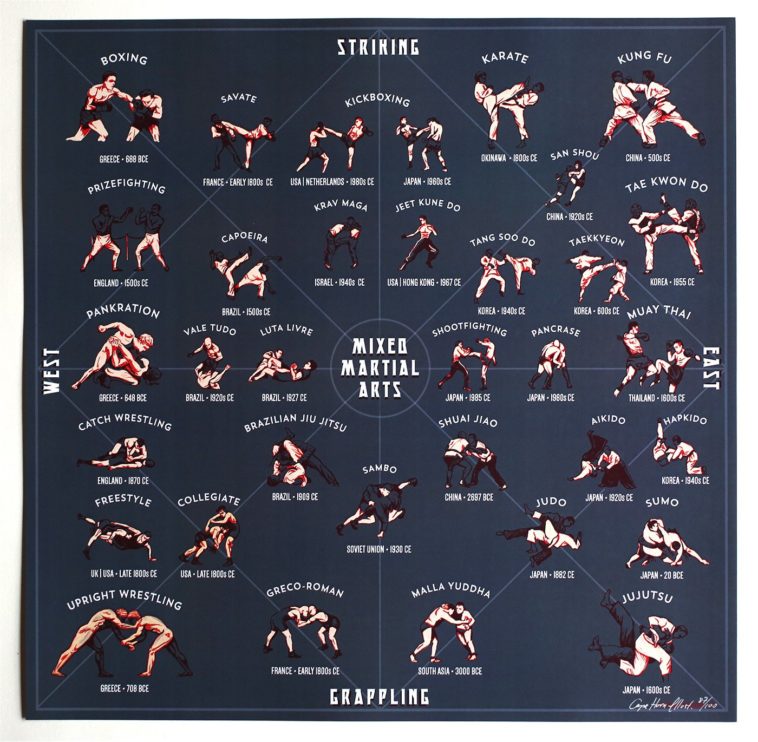Comprehending The Basics And Value Of Taekwondo Patterns
Comprehending The Basics And Value Of Taekwondo Patterns
Blog Article
Authored By-Lindegaard Goode
Did you recognize that there are over 20 various taekwondo types, each with its very own distinct sequence of activities and techniques? These kinds, also called poomsae, play an important duty in the method and advancement of taekwondo specialists.
But exactly what are https://bloodyelbow.com/2023/08/03/wtf-no-touch-martial-arts/ , and why are they so substantial? In this conversation, we will certainly explore the fundamentals of taekwondo types, their origins, and the crucial elements that make them an essential part of this fighting style.
Whether you're a novice or a seasoned practitioner, recognizing the significance of taekwondo forms will deepen your admiration for this ancient practice and enhance your trip towards mastery.
Beginnings and Evolution
The origins and advancement of Taekwondo can be traced back to ancient fighting styles practices in Korea. It was developed over 2,000 years earlier and has actually since become a preferred and globally recognized sport.
Taekwondo was heavily influenced by various Korean martial arts designs, such as Taekkyon and Subak, as well as Chinese martial arts. It was at first used as a means of self-defense, however over time, it advanced into a competitive sporting activity that focuses on striking strategies and high kicks.
In the 20th century, Taekwondo underwent a considerable makeover and was standard into its modern type. The Korea Taekwondo Organization played a critical duty in this process, assisting to develop rules, techniques, and develops that are still followed today.
Key Elements and Methods
Now allow's check out the essential elements and techniques of Taekwondo. To completely understand the key elements and strategies, it is very important to dig deeper into the following subtopics:
- Stances: Taekwondo highlights the right use of positions, such as the front stance, back stance, and steed stance. These positions provide stability, balance, and power in implementing different strategies.
- Strikes and Kicks: Taekwondo is renowned for its powerful and dynamic kicks, consisting of the front kick, roundhouse kick, and side kick. Strikes, such as punches and knifehand strikes, are likewise vital strategies in Taekwondo.
- Blocks and Protection: Reliable defense is essential in Taekwondo. Blocks, such as the high block and low block, are used to protect against inbound assaults. just click the next site and positioning are key to successfully protecting oneself.
Advantages and Impact
One of the considerable benefits of exercising Taekwondo is the enhancement of physical conditioning and general well-being. By participating in routine training sessions, you can boost your cardio health, stamina, adaptability, and endurance. Taekwondo involves a selection of movements that target different muscle groups, aiding you develop a strong and toned body.
In addition, this martial art advertises psychological wellness by lowering tension and anxiety degrees. The technique and emphasis called for in practicing Taekwondo can aid improve your focus and enhance your capacity to handle difficult circumstances.
Furthermore, the practice of Taekwondo instills a sense of confidence, self-discipline, and self-control, which can favorably influence various locations of your life. On the whole, exercising Taekwondo can result in a healthier and a lot more well balanced lifestyle.
Conclusion
So there you have it! Taekwondo types aren't simply plain routines, yet a representation of the abundant history and development of this martial art. By mastering the crucial elements and methods, professionals can gain many physical and psychological advantages.
From increased adaptability and toughness to enhanced emphasis and technique, taekwondo forms have a lasting effect on those who practice them.
So, whether you're a beginner or an experienced martial musician, welcome the power of these kinds and let them take you on a journey with time.
